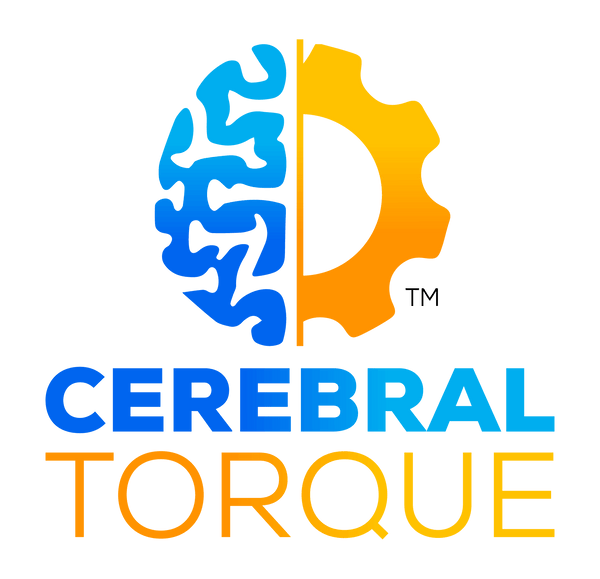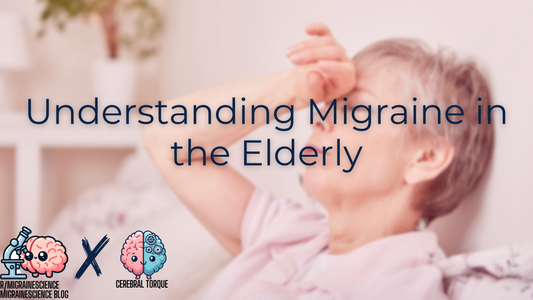
Cortical Spreading Depression Video Study Guide
Cerebral TorqueShare
(Scroll down for video)
Important Concepts:
- Definition of Cortical Spreading Depression (CSD): A wave of neuronal and glial depolarization that slowly progresses across the cerebral cortex.
- Role in Migraine: CSD is strongly associated with the aura phase in both typical and atypical migraine.
- Typical vs. Atypical Aura: Typical auras involve visual, sensory, and/or speech/language disturbances. Atypical auras include motor weakness (hemiplegic migraine), brainstem symptoms (migraine with brainstem aura, and retinal symptoms (retinal migraine).
- CSD and CSF Changes: CSD leads to changes in cerebrospinal fluid (CSF) composition, particularly an increase in certain proteins like CGRP, which is linked to migraine pain. (New research suggests it reaches the trigeminal ganglion through a space in the blood brain barrier).
- CSD Progression and Symptoms: CSD typically starts in the occipital lobe (visual cortex) due to its high neuronal density, explaining why visual auras are most common. As it spreads anteriorly, it affects different cortical areas, resulting in a variety of aura symptoms that reflect the functions of those areas.
- CSD vs. Action Potential: While both involve depolarization, CSD is a much slower, broader, and longer-lasting event than the localized and rapid depolarization of an action potential in a single neuron.
- Energy Demands of CSD: CSD recovery requires a massive energy expenditure to restore ion gradients and replenish ATP, potentially contributing to post-migraine fatigue.
Glossary:
- Cortical Spreading Depression (CSD): A slowly propagating wave of intense neuronal and glial depolarization in the cerebral cortex, implicated in migraine aura and potentially other neurological phenomena.
- Aura: A group of temporary neurological symptoms that can precede or accompany a migraine headache, typically involving visual, sensory, or speech/language disturbances.
- Typical Aura: Aura symptoms involving visual disturbances (e.g., scintillating scotoma), sensory disturbances (e.g., paresthesias), and/or speech/language difficulties.
- Atypical Aura: Aura symptoms that are less common and involve motor weakness (hemiplegic migraine), brainstem symptoms (e.g., vertigo, dizziness) seen in migraine with brainstem aura, or retinal disturbances (retinal migraine).
- Cerebrospinal Fluid (CSF): The clear fluid that surrounds the brain and spinal cord, providing cushioning and transporting nutrients and waste products.
- CGRP (Calcitonin Gene-Related Peptide): A neuropeptide involved in pain transmission and a key player in the pathophysiology of migraine.
- Occipital Lobe: The part of the brain located at the back of the head, responsible for processing visual information.
- Neuronal Density: The number of neurons present in a specific volume of brain tissue.
- Depolarization: A change in the electrical charge across a cell membrane, making it less negative and more likely to trigger an electrical signal.
- Action Potential: A rapid and localized electrical signal that travels along a neuron's axon, transmitting information throughout the nervous system.
- Sodium-Potassium Pump: An active transport protein that uses ATP to move sodium ions out of and potassium ions into the cell, maintaining the resting membrane potential.
- Glutamate: The most abundant excitatory neurotransmitter in the brain, involved in learning, memory, and synaptic plasticity. Excessive glutamate release can contribute to excitotoxicity.
- Hyperemia: Increased blood flow to a particular area of the body.
- Reactive Oxygen Species (ROS): Chemically reactive molecules containing oxygen that can damage cells and contribute to oxidative stress.
- Hypothalamus: A region of the brain that regulates a wide range of bodily functions, including hunger, thirst, body temperature, sleep-wake cycles, and hormone release.
- Prodrome: The early phase of a migraine attack, often characterized by subtle changes in mood, energy levels, behavior, or appetite that occur hours or days before the headache.
- Photophobia: Increased sensitivity to light, a common symptom of migraine.
- Phonophobia: Increased sensitivity to sound, also frequently experienced during migraine attacks.
Questions:
- Why is the occipital lobe often the starting point for cortical spreading depression?
- How does the speed and duration of cortical spreading depression differ from a typical neuronal action potential?
- Explain the relationship between cortical spreading depression and changes in cerebrospinal fluid (CSF) composition.
- What is the difference between typical and atypical aura symptoms in migraine? Provide examples of each.
- Why is the "depression" phase following CSD depolarization considered potentially protective?
- Describe how the symptoms experienced during a migraine aura can reflect the specific areas of the brain affected by CSD.
- How does the energy demand of cortical spreading depression potentially contribute to the experience of migraine?
- What role do glial cells, particularly astrocytes, play in the context of cortical spreading depression?
- Explain how measuring depolarization during cortical spreading depression differs from measuring depolarization during a single neuron's action potential.
- How might cortical spreading depression be linked to the prodrome phase of migraine?
Answers:
- The occipital lobe, responsible for visual processing, has the highest neuronal density in the cortex. This high density makes it more susceptible to the disruptions in ion balance that trigger CSD.
- CSD is significantly slower, spreading at a rate of 2-6 mm/minute, while action potentials travel at 100 m/s. CSD duration can last for an hour or more, whereas action potentials last for milliseconds.
- CSD causes a wave of neuronal and glial depolarization, leading to the release of inflammatory mediators and changes in vascular permeability. These changes alter the composition of CSF, notably increasing levels of proteins like CGRP associated with migraine pain.
- Typical aura symptoms are related to visual, sensory, and/or speech/language disturbances. Atypical aura symptoms are less common and include motor weakness (hemiplegic migraine), brainstem symptoms (vertigo), or retinal migraines.
- The depression phase, characterized by reduced neuronal activity, is thought to be protective because it limits the excessive neuronal firing and neurotransmitter release associated with depolarization, preventing potential excitotoxicity and allowing for metabolic recovery.
- As the CSD wave travels across the cortex, it disrupts the normal functioning of the affected areas. Visual aura symptoms like scintillations occur when CSD affects the occipital lobe. Sensory disturbances like tingling arise from CSD in the parietal lobe. Language difficulties are associated with CSD in temporal and frontal lobes.
- The recovery from CSD requires a massive energy expenditure to restore ionic gradients and replenish ATP. This energy drain on brain cells likely contributes to the fatigue experienced during and after a migraine attack.
- Astrocytes play a critical role in maintaining the ionic balance and neurotransmitter levels in the extracellular space. During CSD, astrocytes are impacted, disrupting their ability to regulate these crucial aspects of neuronal function.
- Depolarization in a single neuron is measured intracellularly using a microelectrode inserted into the neuron and connected to a voltmeter. Measuring CSD depolarization involves placing electrodes on the surface of the brain to detect changes in electrical activity over a wider area.
- It is hypothesized that CSD, potentially originating in deeper brain structures like the hypothalamus, may contribute to prodrome symptoms. The hypothalamus regulates autonomic functions and hormone release, so disruption by CSD could explain mood changes, fatigue, yawning, and food cravings often experienced in the prodrome phase.


